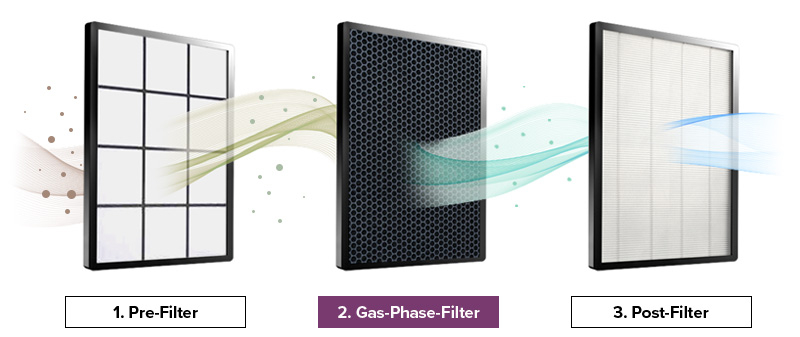
Air Purification Content:
Air purification refers to the process of removing contaminants from indoor air, enhancing air quality, and ensuring a healthier environment for living and working. It involves a variety of technologies and methods to filter out pollutants such as dust, allergens, mold, bacteria, viruses, smoke, VOCs (volatile organic compounds), and other harmful particles. Below are key points regarding air purification
Purpose:
Improving indoor air quality: Air purification systems help reduce airborne contaminants, allergens, and pollutants, providing a safer environment, particularly for those with respiratory issues such as asthma, allergies, or chronic obstructive pulmonary disease (COPD).
Eliminating odors and smoke: Effective air purifiers can remove odors from cooking, pets, tobacco smoke, and other sources.
Methods of Air Purification:
Mechanical Filtration:
HEPA (High-Efficiency Particulate Air) Filters: Trap particles as small as 0.3 microns with 99.97% efficiency. They are effective at removing dust, pollen, pet dander, mold spores, and other fine particles.
Activated Carbon Filter: These filters absorb gaseous pollutants such as VOCs, odors, and harmful chemicals from the air.
Pre-filters: Larger particles are removed before finer filtration takes place, extending the life of HEPA and carbon filters.
Electrostatic Precipitators: Use an electrostatic charge to attract and remove particles from the air, including smaller particles that might pass through traditional filters.
UV-C Light Technology: Destroys bacteria, viruses, and mold spores by exposing them to ultraviolet light, disrupting their DNA and rendering them harmless.
Ozone Generators: Produce ozone to react with and neutralize odors and certain VOCs, though they should be used cautiously due to potential health risks.
Photocatalytic Oxidation (PCO): Uses UV light in conjunction with a catalyst to break down pollutants into harmless byproducts like carbon dioxide and water.
Applications:
Residential: To improve air quality in homes, especially in areas with high levels of pollutants from indoor sources like cleaning products, cooking, and pets.
Commercial and Industrial: In offices, hospitals, and factories to maintain clean air for employees and customers, preventing the spread of airborne diseases and allergens.
Public Spaces: Airports, hotels, and malls often use air purification systems to enhance comfort and safety, especially in crowded environments.
Benefits:
Healthier environment: Reduces the risk of respiratory and cardiovascular diseases.
Allergen control: Helps mitigate allergies and asthma symptoms by reducing exposure to airborne allergens
Odor removal: Effective against tobacco smoke, cooking odors, and other household smells.
Increased comfort: Provides a fresher and cleaner environment, leading to improved quality of life.
Choosing the Right Air Purifier:
Consider the size of the space: Ensure the purifier’s capacity matches the size of the room it will be used in.
Type of filtration: Choose based on the pollutants you want to target (e.g., HEPA for particulate matter, activated carbon for odors and gases).
Maintenance: Check filter replacement requirements and costs.
By understanding these aspects, individuals and businesses can select effective air purification systems to maintain a clean and healthy indoor environment.
